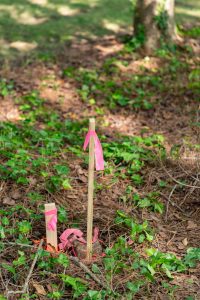How To Find The Lot Lines On Your Minneapolis Duplex For Free
 Last month I had a fence installed in the backyard of a St Paul duplex I own. Before the contractors started, they had to confirm the location of the lot lines. Every property owner in Minnesota has a legal responsibility is to ensure the fence is on their actual lot.
Last month I had a fence installed in the backyard of a St Paul duplex I own. Before the contractors started, they had to confirm the location of the lot lines. Every property owner in Minnesota has a legal responsibility is to ensure the fence is on their actual lot.
I understood this meant the company would be doing a survey. Sure enough, telltale wood stakes with brightly-colored surveyor’s tape showed up about a week later.
As it turns out, the neighbor’s fence is substantially over the lot line and in my yard. I’m not a contentious neighbor, but the law reads I would have the right to either remove the fence or require them to move it at their expense.
I learned something when I contacted the fencing company for a copy of the survey. All they did was locate something called “property pins”. When the cities of Minneapolis and St Paul were platted, a licensed surveyor marked a property’s boundaries with metal pipes driven into the ground. Over time, these may have gotten buried or even accidentally removed.
If they aren’t clearly visible, a metal detector may be helpful. If the lot is in a newer development, however, the stake may have a plastic cap with the surveyor’s license number on it.
The locations of these pins are also noted in a Certificate of Survey, which may be included in the closing documents at the time of purchase. The County Recorder may also have them noted on the plat on file in their or, if the county has a plat on file in their office.
The fence is in and it looks great. And, while my neighbor may argue the point, I legally have a bigger yard!

